Clipart tagged: ‘crested birds’
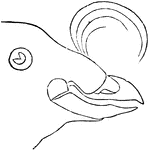
Crested Auk in Summer
"Simorhynchus cristatellus. Crested Auk. Snub-nosed Auk. Bill fundamentally small and simple, compressed-conic,…

Crested Auk in Winter
"Simorhynchus cristatellus. Crested Auk. Snub-nosed Auk. A beautiful crest of 12-20 slender feathers…

Crested Auk
"Simorhynchus cristatellus. Crested Auk. Snub-nosed Auk. The whole plumage otherwise sooty - more brownish-black…

Leadbeater's Cockatoo Sitting on a Tree Branch
"Cacatuo leadbeateri, Leadbeater's Cockatoo, has a red crest banded with yellow and tipped with white,…
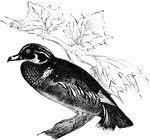
Wood Duck
"Aix sponsa. Wood Duck. Summer Duck. "The Bride." Adult Male: Bill pinkish-white, with lake-red base,…

Paradise Flycatcher
"Terpsiphone paradisi, Paradise Flycatchers, have fine crests, shorter in the female; while fleshy wattles,…

Ruffed Grouse Head
"Bonasa umbella. Ruffed Grouse. "Partridge;" "Pheasant;" Above, variegate reddish- or grayish-brown,…

Ruffed Grouse
"Bonasa umbella. Ruffed Grouse. "Partridge;" "Pheasant;" Above, variegate reddish- or grayish-brown,…
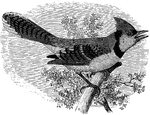
Blue Jay
"Cyanocitta cristata. Blue Jay. Male: Purplish-blue, below pale purplish-gray, whitening on throat,…

Long-crested Jay
"Cyanocitta stelleri macrolopha. Long-crested Jay. Upper parts sooty umber-brown, with a faint blue…
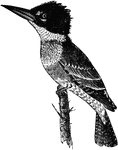
Belted Kingfisher
"Ceryle alcyon. Belted Kingfisher. Upper parts, broad pectoral bar, and sides under the wings, dull…

Kirombo
"Leptosoma discolor, the Kiromobo or Vorondreo of Madagascar, and the Comoro Islands, which has a big…

Japanese Murrelet Bill
"Synthliborhamphus umizusume. Japanese Murrelet. Temminck's Auk. Bill more elongate and acute than in…
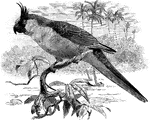
Uvaean Parakeet
The Nymphicus uvaeesis, Uvaean Parakeet, has a dark coloured face, black beak, green plumage and crest,…
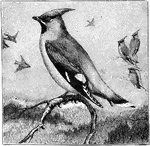
One Waxwing Sitting on a Branch in the Forefront with Three Waxwings Sitting on Branches and Four Flying Around in the Background
"Both sexes of our irregular winter-visitor the Waxwing (Ampelis garrulus) are silky greyish-brown,…
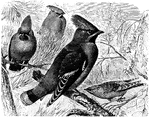
Bohemian Waxwing
"Ampelis garrulus. Bohemian Waxwing. General color brownish-ash, shading insensibly from the clear ash…
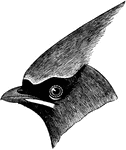
Cedar Waxwing
"Ampelis cedrorum. Cedar Waxwing. Carolina Waxwing. Cedar-bird. Cherry Bird. General color shading from…